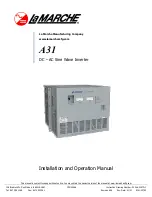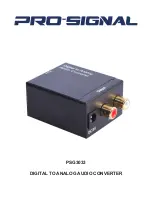
3. Installation
3.1. Location of the inverter
Table 1.
For best operating results, the inverter should be placed on a flat surface. To ensure a
trouble free operation of the inverter, it must be used in locations that meet the
following requirements:
a) Avoid any contact with water. Do not expose the inverter to rain or moisture.
b) Do not place the unit in direct sunlight. Ambient air temperature should be
between -20°C and 40°C (humidity < 95% non-condensing).
c) Do not obstruct the airflow around the inverter. Leave at least 30 centimeters
clearance above and below the inverter.
When the unit is running too hot, it will shut down. When it has reached a safe
temperature level the unit will automatically restart again.
This product contains potentially dangerous voltages. It should only be installed under
the supervision of a suitable qualified installer with the appropriate training, and
subject to local requirements. Please contact Victron Energy for further information or
necessary training.
Excessively high ambient temperature will result in the following:
· Reduced service life.
· Reduced charging current.
· Reduced peak capacity, or shutdown of the inverter.
Never position the appliance directly above lead-acid batteries. The Inverter RS is
suitable for wall mounting. For mounting purposes, a hook and two holes are provided
at the back of the casing. The device must be fitted vertically for optimal cooling.
For safety purposes, this product should be installed in a heat-resistant environment.
You should prevent the presence of e.g. chemicals, synthetic components, curtains or
other textiles, etc., in the immediate vicinity.
Try and keep the distance between the product and the battery to a minimum in order to minimise cable voltage losses
3.2. Battery and battery lead requirements
In order to utilize the full capacity of the product, batteries with sufficient capacity and battery cables with sufficient cross section
should be used. The use of undersized batteries or battery cables will lead to:
• Reduction in system efficiency.
• Unwanted system alarms or shutdowns.
• Permanent damage to system.
See table for MINIMUM battery and cable requirements.
Inverter RS Smart
Page 5
Installation








































